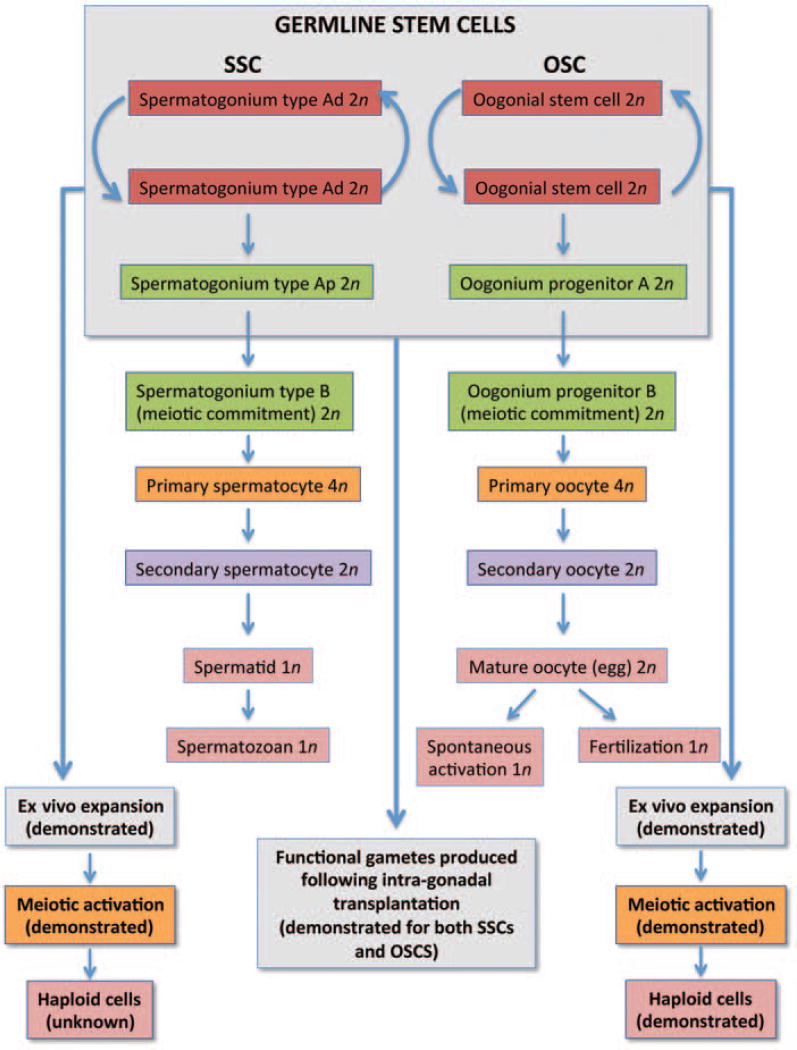Figure 3.
Comparison of mammalian gametogenesis and germline stem cell function in the gonads of adult males and adult females. In most if not all studies, spermatogonial stem cells (SSCs) are isolated as a mix of type A dark (Ad) and type A pale (Ap) spermatogonia. Once isolated, SSCs can be stably expanded ex vivo, although the in vitro generation of haploid (1n) cells from cultured SSCs of any species has not yet been reported. Functionality of SSCs is classically assessed through intratesticular transplantation protocols, in which transplanted SSCs carrying a traceable marker gene repopulate chemotherapy-damaged seminiferous tubules to produce fertilization-competent spermatozoa with the donor cell haplotype. In females, oogonial stem cells (OSCs) isolated from adult mouse and human ovaries can also be stably expanded ex vivo, although little is currently known of the intermediate stages of germ cells formed as OSCs undergo expansion and ultimately differentiation through meiosis. Accordingly, possible OSC progenitors A and B have been depicted by drawing parallels to SSC biology. In addition to evidence of stable ex vivo expansion, the generation of haploid germ cells in cultures of mouse and human OSCs has also been reported. In studies comparable with those used to test SSC functionality, transplantation of OSCs carrying green fluorescent protein (GFP) as a traceable marker gene into adult wild-type mouse ovaries, with or without prior chemotherapy conditioning, results in the formation of GFP-positive oocytes that mature, ovulate, and fertilize to produce viable embryos and offspring.

